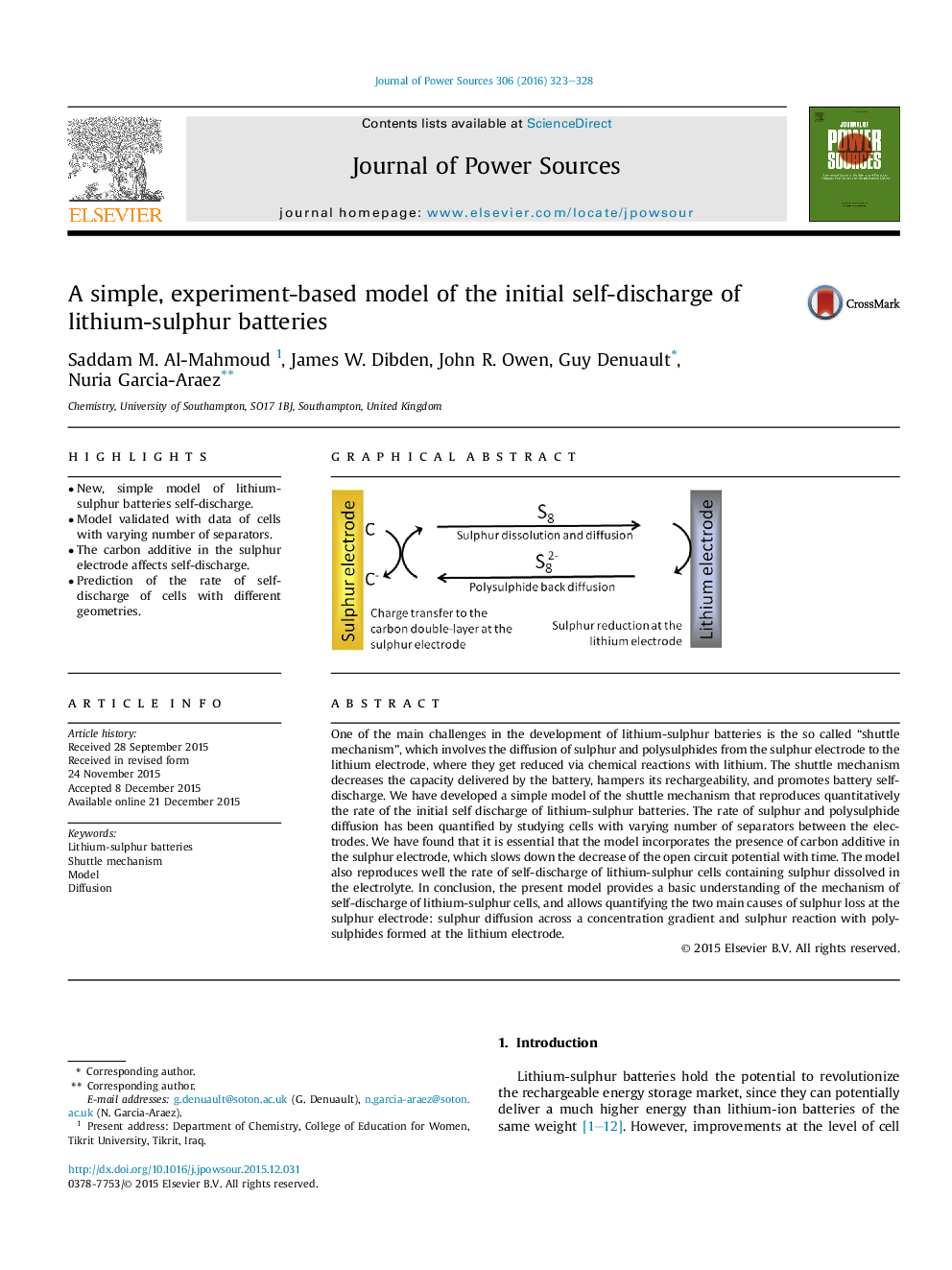| کد مقاله | کد نشریه | سال انتشار | مقاله انگلیسی | نسخه تمام متن |
|---|---|---|---|---|
| 1292375 | 1497926 | 2016 | 6 صفحه PDF | دانلود رایگان |
• New, simple model of lithium-sulphur batteries self-discharge.
• Model validated with data of cells with varying number of separators.
• The carbon additive in the sulphur electrode affects self-discharge.
• Prediction of the rate of self-discharge of cells with different geometries.
One of the main challenges in the development of lithium-sulphur batteries is the so called “shuttle mechanism”, which involves the diffusion of sulphur and polysulphides from the sulphur electrode to the lithium electrode, where they get reduced via chemical reactions with lithium. The shuttle mechanism decreases the capacity delivered by the battery, hampers its rechargeability, and promotes battery self-discharge. We have developed a simple model of the shuttle mechanism that reproduces quantitatively the rate of the initial self discharge of lithium-sulphur batteries. The rate of sulphur and polysulphide diffusion has been quantified by studying cells with varying number of separators between the electrodes. We have found that it is essential that the model incorporates the presence of carbon additive in the sulphur electrode, which slows down the decrease of the open circuit potential with time. The model also reproduces well the rate of self-discharge of lithium-sulphur cells containing sulphur dissolved in the electrolyte. In conclusion, the present model provides a basic understanding of the mechanism of self-discharge of lithium-sulphur cells, and allows quantifying the two main causes of sulphur loss at the sulphur electrode: sulphur diffusion across a concentration gradient and sulphur reaction with polysulphides formed at the lithium electrode.
Figure optionsDownload as PowerPoint slide
Journal: Journal of Power Sources - Volume 306, 29 February 2016, Pages 323–328
